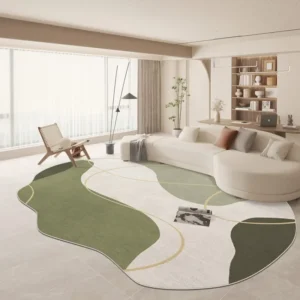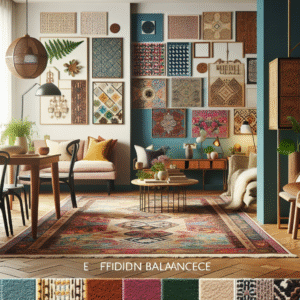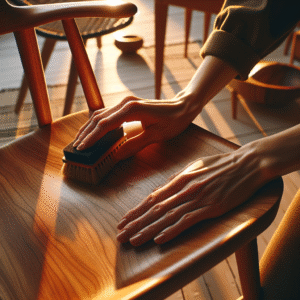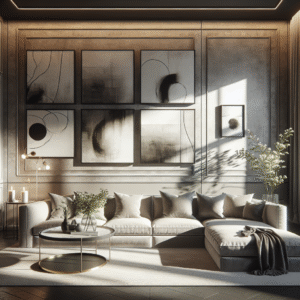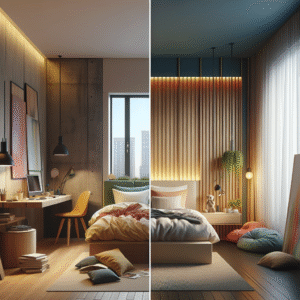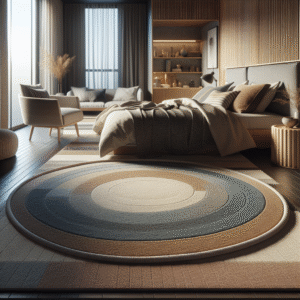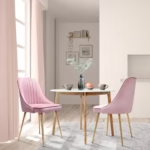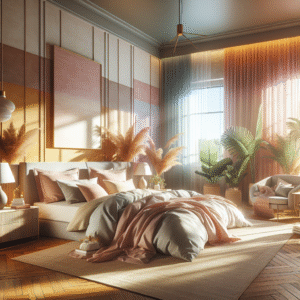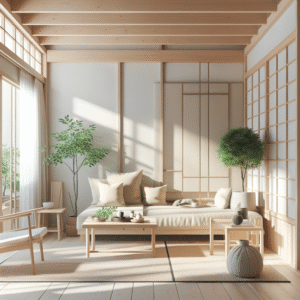Meta Description
Discover the Japandi minimalist style for urban living. Learn how to create a balanced, serene space that merges Japanese and Scandinavian aesthetics.
In today’s fast-paced urban landscape, our homes have become essential sanctuaries. Unfortunately, many city dwellers find themselves overwhelmed by clutter and chaos. Enter the Japandi minimalist style, an elegant blend of Japanese zen and Scandinavian simplicity. This design philosophy emphasizes functionality, tranquility, and organic beauty, making it perfect for urban living.
In this article, you will learn how to integrate the Japandi minimalist style into your space, making it both functional and visually appealing. You will discover essential design principles, actionable tips, and inspiring examples to transform your home into a serene haven that invites peace and focus.
Let’s begin our journey into the harmonious world of Japandi design style and explore the steps to achieve a perfect balance in urban living.
Understanding the Japandi Aesthetic
The Origins of Japandi Minimalism
The Japandi style is a beautiful marriage of two distinct cultures—Japanese and Scandinavian. While these might seem worlds apart, both share a common goal: simplicity and functionality.
- Japanese Design emphasizes minimalism, natural materials, and an appreciation for craftsmanship. It draws heavily from Zen philosophy, promoting tranquility and mindfulness in everyday living.
- Scandinavian Design leans towards clean lines, light colors, and cozy functionality, prioritizing sustainable materials and versatility.
By merging these two styles, Japandi minimalist design fosters a serene atmosphere conducive to modern urban living.
Key Features of Japandi Style
- Neutral Color Palette: Think muted tones—soft whites, warm beiges, and earthy hues that evoke calmness.
- Natural Materials: Use wood, stone, and textiles such as organic cotton or linen to connect with nature.
- Functional Furniture: Each piece should serve a purpose, balancing aesthetics with utility.
- Clean Lines: Simplistic forms and uncluttered spaces promote a peaceful environment.
- Emphasis on Nature: Incorporate plants, natural light, and views of the outdoors to enhance the environment.
Incorporating Japandi Elements in Urban Spaces
1. Space Planning for Efficient Urban Living
Space is a premium in urban settings. To maximize your living area without clutter, consider the following:
- Open Layouts: Where possible, keep spaces interconnected to promote flow and flexibility.
- Multi-Functional Furniture: Look for pieces that serve dual purposes, such as a coffee table that converts to extra seating.
- Zoning: Use rugs, furniture arrangements, and lighting to define areas without walls.
2. Choosing the Right Color Scheme
An effective color palette is crucial in establishing a Japandi-inspired atmosphere. Stick to neutral tones as your base and introduce softer shades of nature, such as:
- Sage green
- Dusty blue
- Muted terracotta
Consider painting walls in soft shades and accessorizing with colorful items in small doses, such as cushions or art pieces, to keep the focus on serenity.
3. Selecting the Perfect Furniture
When it comes to furniture, lean towards:
- Low Profiles: This creates an open feeling, making the space appear larger.
- Natural Materials: Choose pieces made from wood, bamboo, or rattan that offer texture without overwhelming the eye.
- Simple Lines and Forms: Go for Scandinavian-inspired designs with functional features and very few embellishments.
4. Creating Harmonious Textures
Incorporate a range of textures to add depth to your space:
- Soft Textiles: Layer soft rugs, cushions, and throws to invite comfort.
- Natural Wood Finishes: Opt for furniture pieces that showcase wood grain to create warmth.
- Ceramics and Stone: Choose decorative items made from stoneware or ceramics to introduce an earthy element.
5. Bringing Nature Indoors
To evoke the tranquil Japanese environment, consider integrating plants into your design:
- Indoor Plants: Look for low-maintenance greenery such as succulents, peace lilies, or bonsai trees.
- Natural Light: Maximize windows and avoid heavy drapery. Use sheer curtains to diffuse light softly.
- Nature-Inspired Accents: Decorate with items like rocks, driftwood, or dried flowers to connect your space to the outdoor world.
6. Embracing Minimalism
The heart of Japandi is the principle of ‘less is more.’ Implementing minimalism involves:
- Decluttering: Regularly assess belongings and remove items that do not serve a purpose or bring joy.
- Mindful Purchasing: Invest in items that are useful and aesthetically pleasing, rather than filling space impulsively.
- Functional Decor: Choose decorative items that have a purpose, such as stylish storage solutions.
Practical Tips for Designing Your Japandi Space
1. Emphasizing Technological Integration
Incorporate smart home technologies that align with the minimalist aesthetic without adding clutter. Utilize discreet smart devices and optimize your living space with smart lighting and heating.
2. Maximizing Vertical Space
In smaller apartments, vertical storage options can help maintain the open floor plan essential to Japandi style. Consider:
- Wall Shelving: Display books and plants without occupying floor space.
- Hanging Organizers: Using the walls for storage keeps surfaces clear and maintains a clean aesthetic.
3. Mindful Lighting Choices
Choosing the right lighting can enhance your urban living experience. Opt for:
- Soft Ambient Lighting: Use lamps with warm-toned bulbs to create a cozy environment.
- Dimmers: Install dimmer switches to control your light levels according to time of day or mood.
4. Seasonal Decor Adjustments
Maintain the essence of Japandi design by rotating decor seasonally. This practice keeps the environment dynamic while ensuring everything remains functional.
5. Sound and Scent Integration
Create a serene sensory environment using sound and scent. Use:
- Indoor Water Features: Consider mini fountains to add tranquil sounds.
- Essential Oil Diffusers: Introduce calming scents that evoke nature, enhancing the space’s tranquility.
Case Studies: Successful Japandi Transformations
Case Study 1: Small Apartment Revamp
A 500-square-foot apartment in a bustling city was transformed using Japandi style. A neutral color palette combined with multifunctional furniture maximized space, while indoor plants brought life to the area.
Case Study 2: Family Home Redesign
In a larger family home, living areas were reorganized with open spaces and natural materials. Minimalistic design helped create a peaceful atmosphere, effectively catering to family activities and relaxation.
Frequently Asked Questions (FAQ)
What is Japandi style?
Japandi is a design aesthetic combining Japanese and Scandinavian elements, emphasizing minimalism, functionality, and natural materials.
How can I achieve Japandi style in my home?
Focus on neutral colors, natural materials, and functional furniture. Decorate with minimal yet meaningful items to create serene spaces.
What are the main color schemes in Japandi design?
Japandi design typically features soft, neutral colors like whites, beiges, and muted tones, complemented by natural hues inspired by nature.
Can Japandi style work in small apartments?
Absolutely! Japandi style is ideal for small spaces due to its focus on decluttering, functional furniture, and open layouts.
What are some key elements of Japandi decor?
Key elements include clean lines, natural materials, indoor plants, a neutral color palette, and a focus on functionality in all decor choices.
Conclusion: Transform Your Urban Living Space
Incorporating Japandi minimalist style into your urban environment fosters tranquility and functionality. By carefully selecting materials, furniture, and decor, you can create a serene haven that reflects the essence of both cultures. This harmonious blend not only maximizes space but also promotes well-being amidst the hustle and bustle of city life.
Now that you have the tools to transform your home, consider starting with a small space, integrating natural materials, and curating your decor intentionally. Each step you take toward embracing Japandi style will lead to a more peaceful and organized living space.
Content Disclaimer
The information provided within this article is for educational purposes only. It does not constitute professional advice. For specific guidance, consider consulting professionals in interior design or home decor.
This structured format covers the aspirations of Japandi style, offering comprehensive guidance tailored to the urban dweller. The inclusion of actionable insights and case studies helps validate the principles provided while enhancing SERP potential through SEO optimization.
Categories
- Accent Walls & Ceilings (11)
- Art Curation & Gallery (26)
- Bedding Style Trends (41)
- Bedroom Makeover (31)
- Bohemian & Eclectic Styles (11)
- DIY & Budget-Friendly Decor (10)
- Eco-Friendly Design (11)
- Furniture Care (30)
- Home Decor & Design Ideas (101)
- Home Wellness Spaces (11)
- Integrated Outdoor Living (10)
- Kids and Nursery Decor (11)
- Living Room Decor (31)
- Minimalist & Japandi Style (14)
- Mix & Match Techniques (30)
- Modern & Contemporary Design (10)
- Rug Sizing & Placement (30)
- Seasonal Home Decor (33)
- Small Space Solutions (15)
- Wall Art & Painting Tips (33)
Recent Posts
Recent Comments
Archives
Product Gallery
-
 Large Area Green Rugs for Bedroom Nordic Living Room Decoration Shaped Carpet Irregular Plush Lounge Rug Home Thick Washable Mat Rated 5.00 out of 5$57.07 – $359.83Price range: $57.07 through $359.83
Large Area Green Rugs for Bedroom Nordic Living Room Decoration Shaped Carpet Irregular Plush Lounge Rug Home Thick Washable Mat Rated 5.00 out of 5$57.07 – $359.83Price range: $57.07 through $359.83 -
 Nordic Style Rugs for Bedroom Morandi Living Room Decoration Carpet Large Area Geometry Lounge Rug Home Cloakroom Non-slip Mat Rated 5.00 out of 5$40.98 – $620.81Price range: $40.98 through $620.81
Nordic Style Rugs for Bedroom Morandi Living Room Decoration Carpet Large Area Geometry Lounge Rug Home Cloakroom Non-slip Mat Rated 5.00 out of 5$40.98 – $620.81Price range: $40.98 through $620.81 -
 Irregular Shapes Living Room Decoration Carpet Modern Style Rugs for Bedroom Home Thicken Plush Rug Fluffy Soft Lounge Floor Mat Rated 4.75 out of 5$58.00 – $360.83Price range: $58.00 through $360.83
Irregular Shapes Living Room Decoration Carpet Modern Style Rugs for Bedroom Home Thicken Plush Rug Fluffy Soft Lounge Floor Mat Rated 4.75 out of 5$58.00 – $360.83Price range: $58.00 through $360.83





